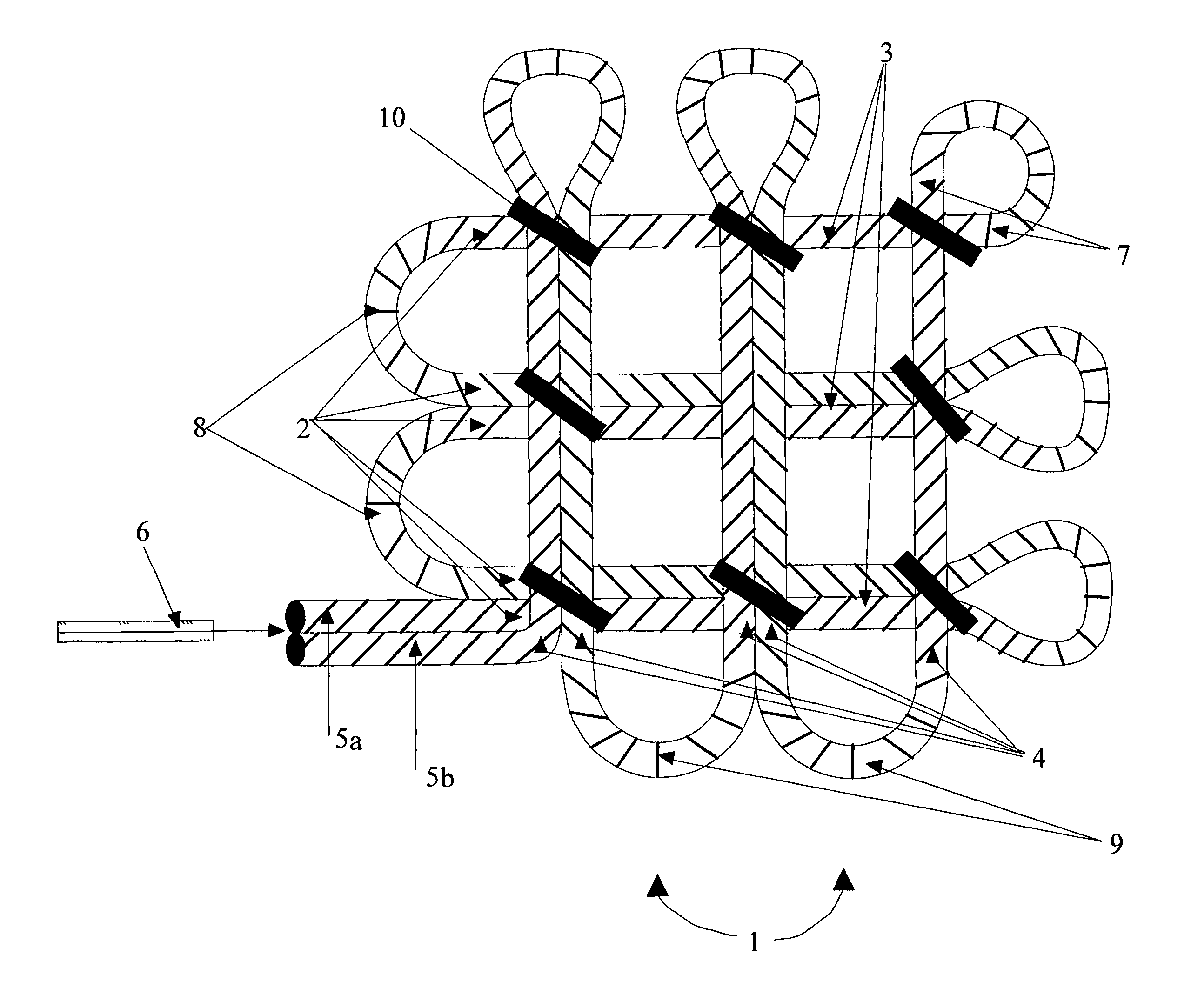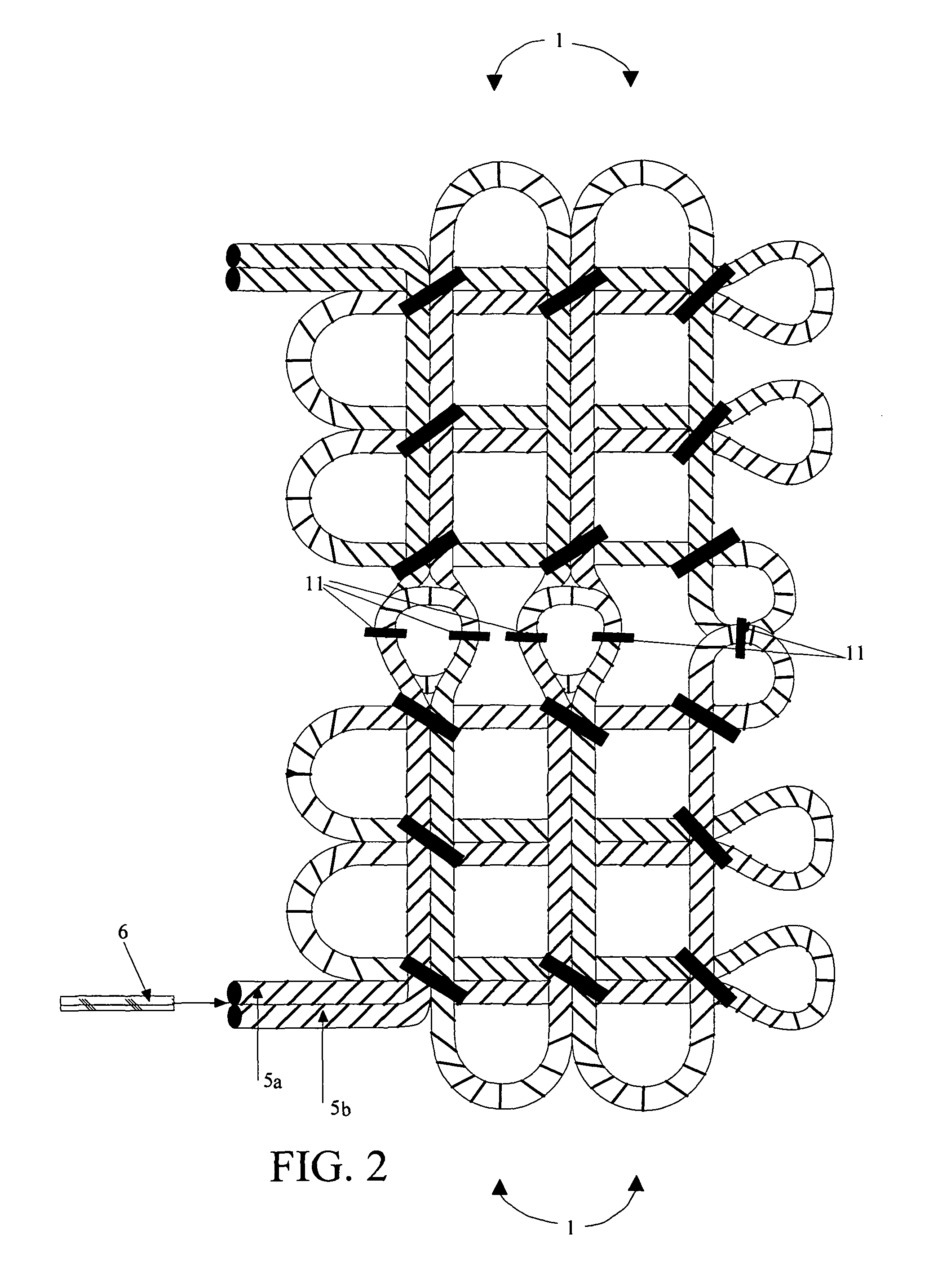Explosive matrix assembly
a matrix and explosive technology, applied in the field of explosives, can solve the problems of inherently dangerous explosive disposal operations, increased collateral property damage, and more likely death or injury of bomb technicians during explosive disposal operations, so as to maximize the effect of explosive charge, increase the net explosives, and maximize the tensile strength of counter-charges
- Summary
- Abstract
- Description
- Claims
- Application Information
AI Technical Summary
Benefits of technology
Problems solved by technology
Method used
Image
Examples
Embodiment Construction
Referring to the drawings, FIG. 1 depicts a preferred embodiment of the explosive matrix assembly 1 according to the present invention. The explosive charge is provided by a single length of detonating cord 2 that is configured into a first set of at least five parallel straight portions 3 lying in a first plane. Four of the straight portions are paired into two pairs. There is a space, usually about two inches, separating the two pairs from each other, and about two inches separating the unpaired straight portion from the nearest paired straight portion. The detonating cord is further configured so that there is a second set of at least five more parallel straight portions 4 that are orthogonal to the first set and lying in a second plane. The second set of straight portions 4 are paired and spaced in a manner similar to the first set of straight portions 3. Finally, the detonating cord is further configured so that there are two portions, 5a and 5b, referred to herein as “tails,” ...
PUM
| Property | Measurement | Unit |
|---|---|---|
| perimeter | aaaaa | aaaaa |
| length | aaaaa | aaaaa |
| surface area | aaaaa | aaaaa |
Abstract
Description
Claims
Application Information
 Login to View More
Login to View More - R&D
- Intellectual Property
- Life Sciences
- Materials
- Tech Scout
- Unparalleled Data Quality
- Higher Quality Content
- 60% Fewer Hallucinations
Browse by: Latest US Patents, China's latest patents, Technical Efficacy Thesaurus, Application Domain, Technology Topic, Popular Technical Reports.
© 2025 PatSnap. All rights reserved.Legal|Privacy policy|Modern Slavery Act Transparency Statement|Sitemap|About US| Contact US: help@patsnap.com



